If you’re a keen gardener you’ll know just how many varieties of trees are out there. But with such a huge number it can be difficult to keep track of them all. Explore the different varieties of trees that start with S.
To help, we’ve created this article which should make broadening your tree knowledge a little easier.
In the list below, we’ll take a look at trees beginning with the letter S and discover what makes each of them so special. Hopefully, we’ll also introduce you to some new varieties along the way.
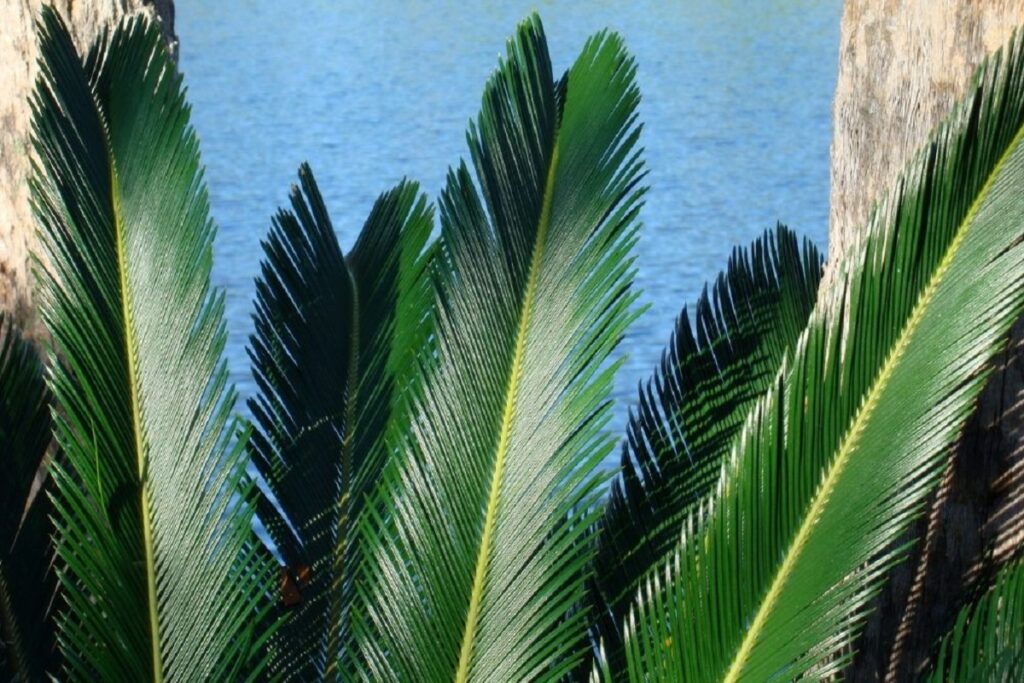
So if you’re ready to find out some interesting new facts about trees beginning with S, read on and enjoy!
1. Sago Palm Trees
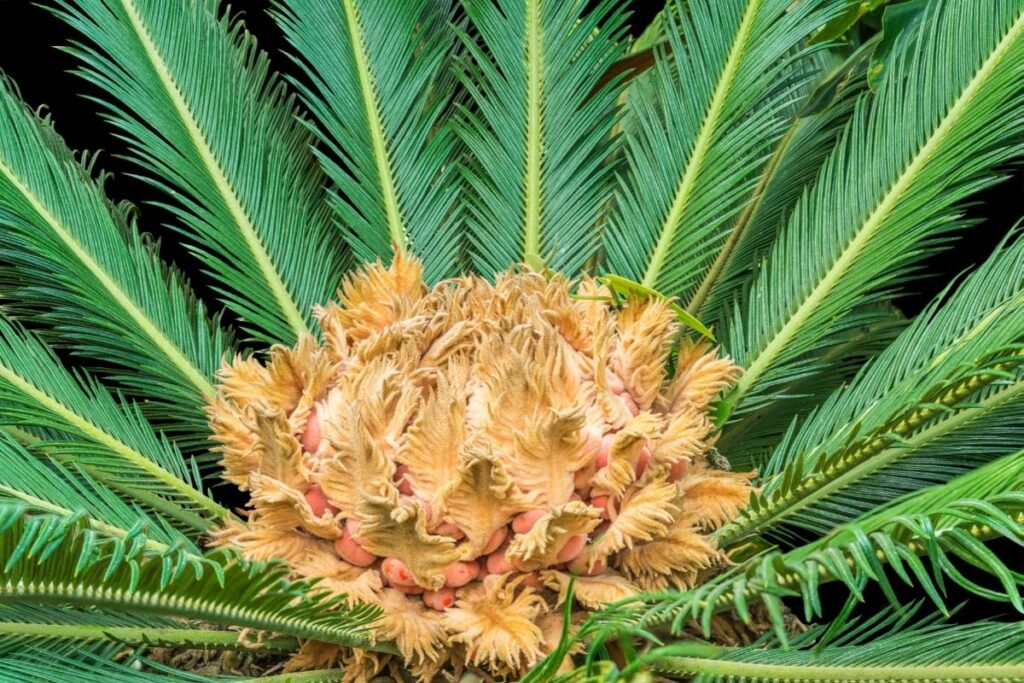
Despite its name, the Sago Palm Tree isn’t classed as a true Palm Tree but rather a Cycad; ancient tropical and subtropical plants that grow from a trunk.
Native to regions of Japan and Southern China, this tree is low-growing and produces nuts, but not flowers or fruits.
It can be grown indoors in cooler climates but will be smaller than if it was planted in a garden.
One thing to note about these trees is that they are extremely slow-growing and only gain a few inches annually.
The feather-like foliage grows in a symmetrical ring, but due to the speed at which it grows, this plant may only produce one new frond each year.
2. Sal Tree

Native to the Indian subcontinent, this tree also goes by the name Shala and is famous for its medicinal, religious, and commercial uses.
The Sal Tree is valued as a holy tree and is moderate to slow-growing but can reach heights of up to 50 meters.
The leaves of this tree are oval at the base taper into a long point at the apex and range in color from green to red. It also produces yellow-white flowers and long fruits that are surrounded by five wings.
If planted in wetter areas, the Sal Tree is evergreen, however in drier areas, it will shed most of its leaves from February to April and will produce new leaves around May.
RELATED: 13 Different Types Of Russian Trees
3. Sapele
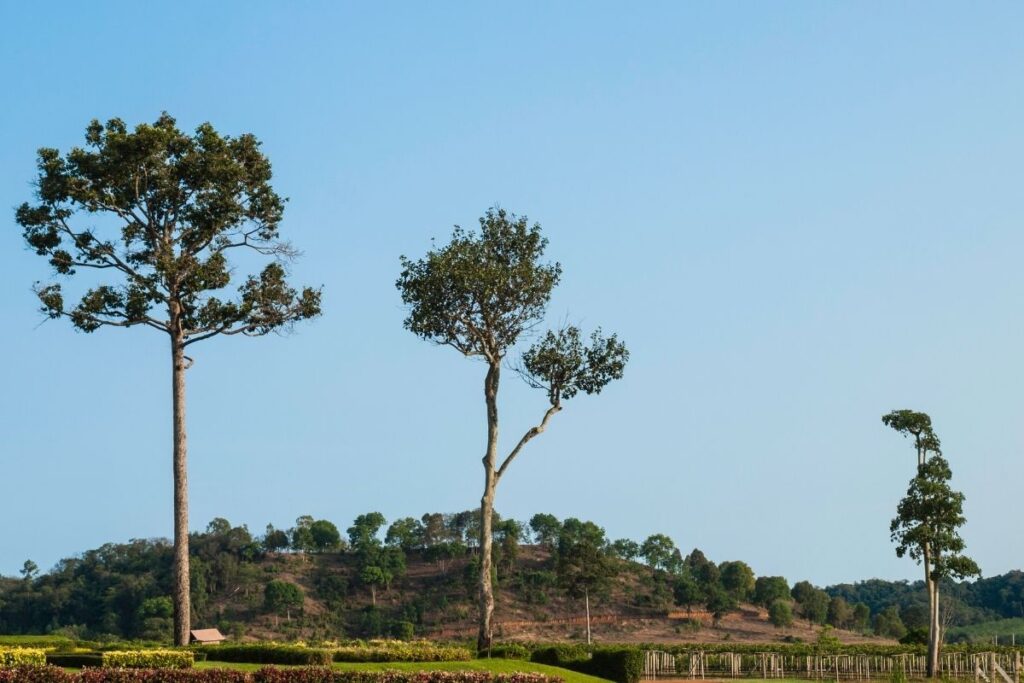
This tree is named after the city of Sapele in Nigeria, where there is a preponderance of this particular tree.
The Sapele can grow up to heights of around 45 meters and due to its popularity as a timber export, there are currently many felling restrictions in place to help stop the Sapele population from dwindling.
The colors of this tree range from light pink to brown and gold to red, making this a perfect alternative to mahogany. It is typically used for furniture, luxury flooring, and even boat building.
The Sapele Tree also produces flowers that are yellow in color and consist of five petals, as well as fruit capsules that can grow up to around 10cm long.
4. Sassafras
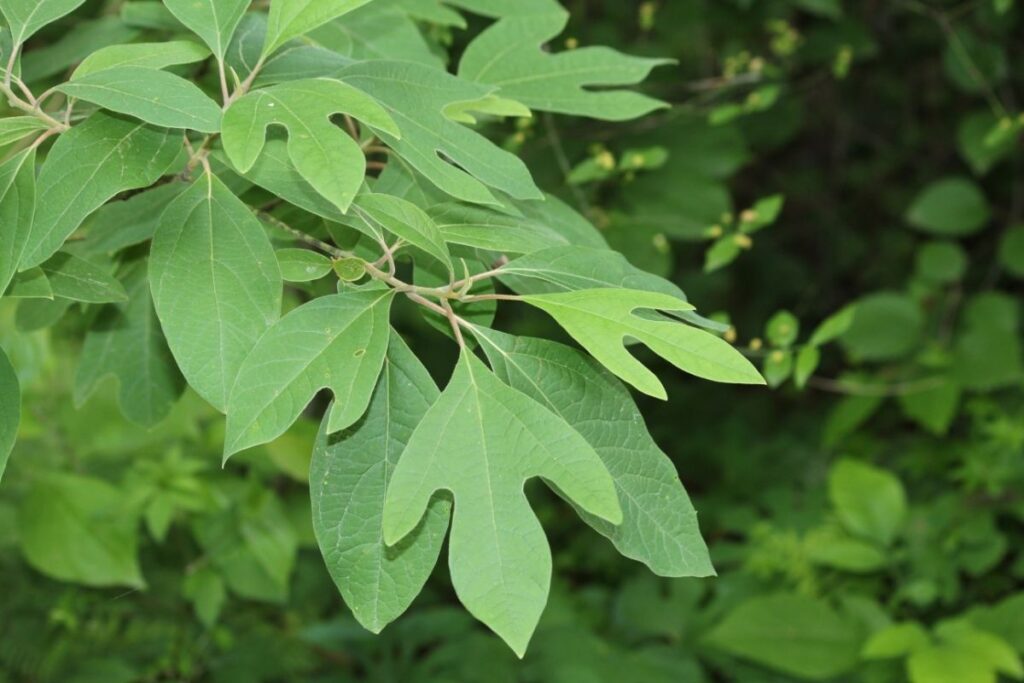
The Sassafras is native to North America and is generally known for its incredible display of autumn foliage and aromatic smell.
Its leaves can grow to around 7 inches (ca. 18 cm) and range in color from bright to medium green during the summer months changing to colors of yellow, orange, scarlet, and even purple during the fall months.
The dark-blue berries that grow on this tree are loved by birds and with this tree growing at a medium to fast pace, you can expect to see birds flocking to this tree, especially during the fall months.
5. Sausage Tree
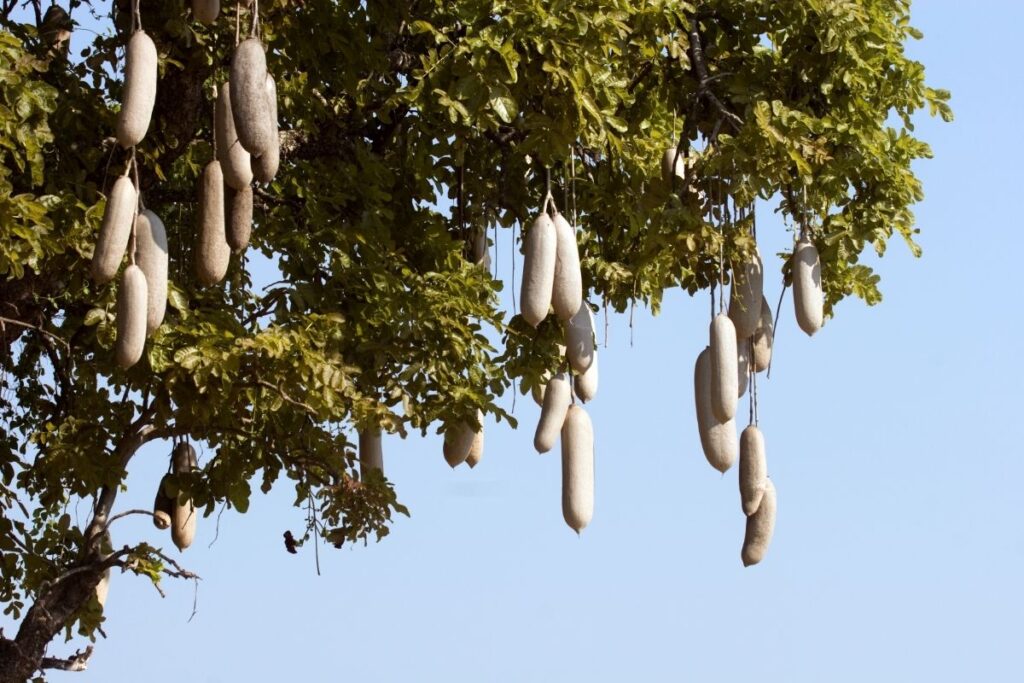
This tropical tree is native to Africa and as the name suggests, sausage-like fruits grow on it.
The tree can grow to around 12 meters in height with its famous fruits reaching lengths of up to 60 cm long which hang down on cord-like stalks.
The flowers of this tree bloom during the night and release a mouse-like odor that tends to attract bats that visit the trees for nectar and pollen.
The flowers are purple-green and are irregular in shape, typically bending to one side. Throughout the night, the flowers on this tree fall, leaving the tree bare.
6. Saw Palmetto

This small palm tree is native to the Southeastern regions of the United States and is known for its medicinal fruits.
Instantly recognizable for its fan-shaped leaves, the Saw Palmetto tree has white flowers which tend to grow in dense clusters along with green, yellow, and orange fleshy fruits. When ripe they turn to a bluish-black color.
The health benefits of this tree have included the prevention of hair loss, supporting prostate health, and decreasing inflammation among others.
Saw Palmetto trees are also thought to live for a long time with some estimated to be an impressive 500-700 years old.
7. Sea Beam Tree
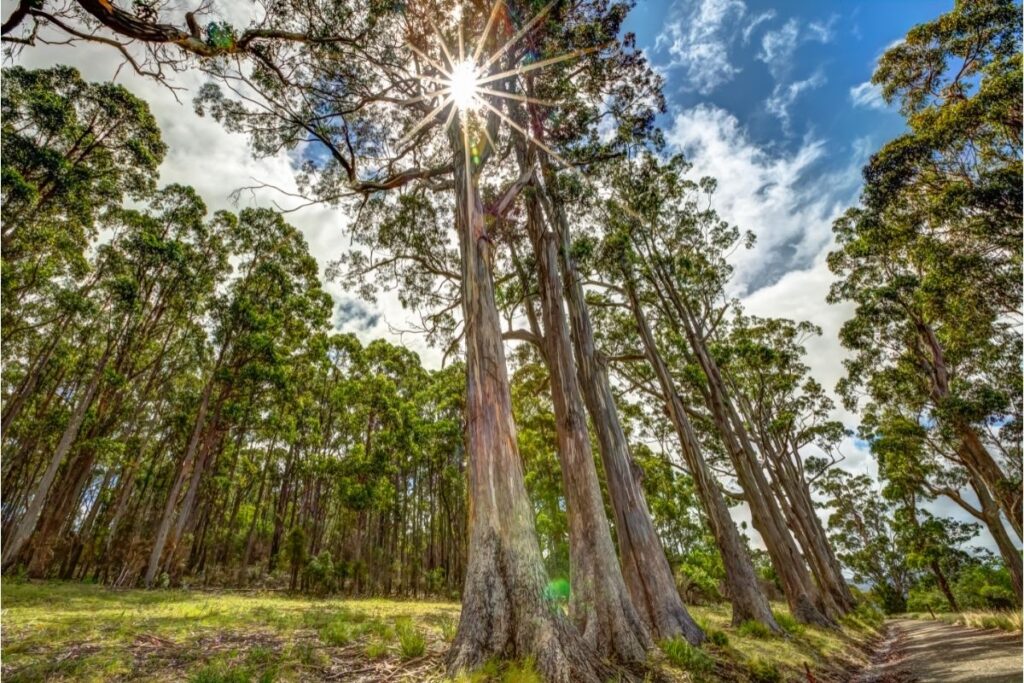
This large evergreen tree can be found in Malesia, the Pacific, and also Central America and can grow up to around 40 meters in height.
The flowers of a Sea Beam Tree are greenish-white in color and have a sweet smell to them, which is perfect for attracting bees and small insects.
This tree also has oblong-shaped fruits that turn from green to brown and are slightly hairy in texture.
8. Serviceberry

The Serviceberry is a small tree that is typically known for its beautiful fall colors.
Blooming in March/April, this tree produces delicate white flowers and berry-like fruit that ripens in the summer months.
During the fall months, the leaves on this tree turn vivid shades of red and gold making this a great option if you want to add some color to your space.
This tree grows in a rounded shape, however, you can change this with pruning. It only grows 1’ to 2’ a year, so if you want something for a smaller yard, the Serviceberry Tree is a perfect choice.
9. She-oak
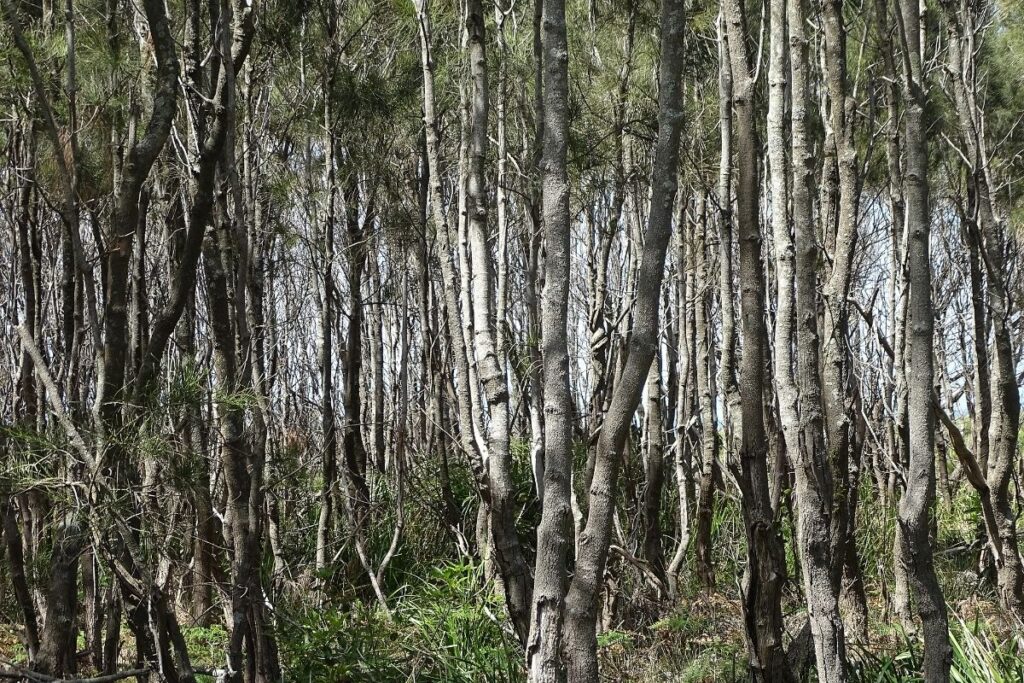
These unusual trees are known for having separate male and female plants, each of which is a different color.
Every year, the male plants turn a dusky red as they release their pollen, while the female plants are covered with small red flowers and seed cones.
The She-oak trees traditionally have smaller leaves or branchlets with different segments to them, similar to pine needles.
The spiny cones are the size of an acorn but have the same texture as a pine cone.
On the female plants, the cones are woody fruit, while on the male plants don’t have any fruit at all.
10. Siberian Peashrub
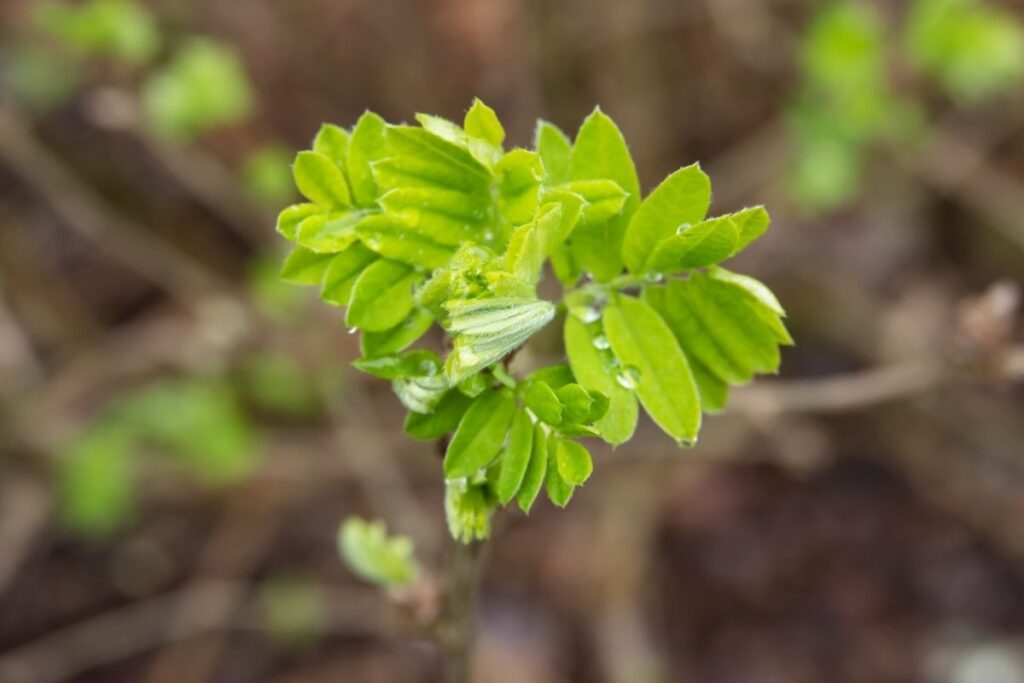
The Siberian Peashrub is native to Siberia and Manchuria and was also introduced to the United States.
Also known as Caragana Pea Tree, it can achieve heights of up to 15 feet (4.57 m) tall and is often used as windbreaks, in borders, screen plantings, and as flowering hedges thanks to its height.
The long leaves of this tree are made up of eight to twelve leaflets with yellow snapdragon-shaped blooms that appear in early spring and form pods in late June/early July.
Although this tree can be used medicinally, some ethnic groups also use it for food by eating the pods and bark, as well as to create an azure-colored dye from the leaves.
11. Silky Oak/Silver Oak
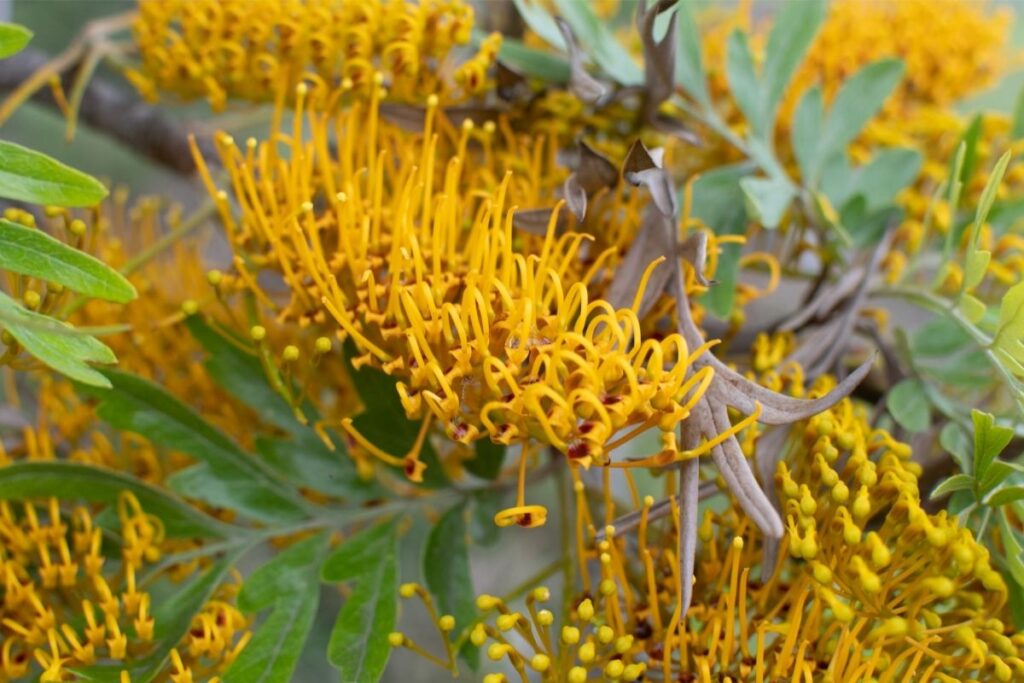
This fast-growing evergreen tree can reach heights of up to 20 meters or more, however, it is also a popular choice for growing annually and being used as a bushy shrub.
Its fern-like leaves are olive-green and grow to around 30 cm in length with tubular yellow flowers decorating the branches of mature plants.
The flowers are typically arranged on one side of the branch, and bloom from September to November.
12. Silky-Camellia
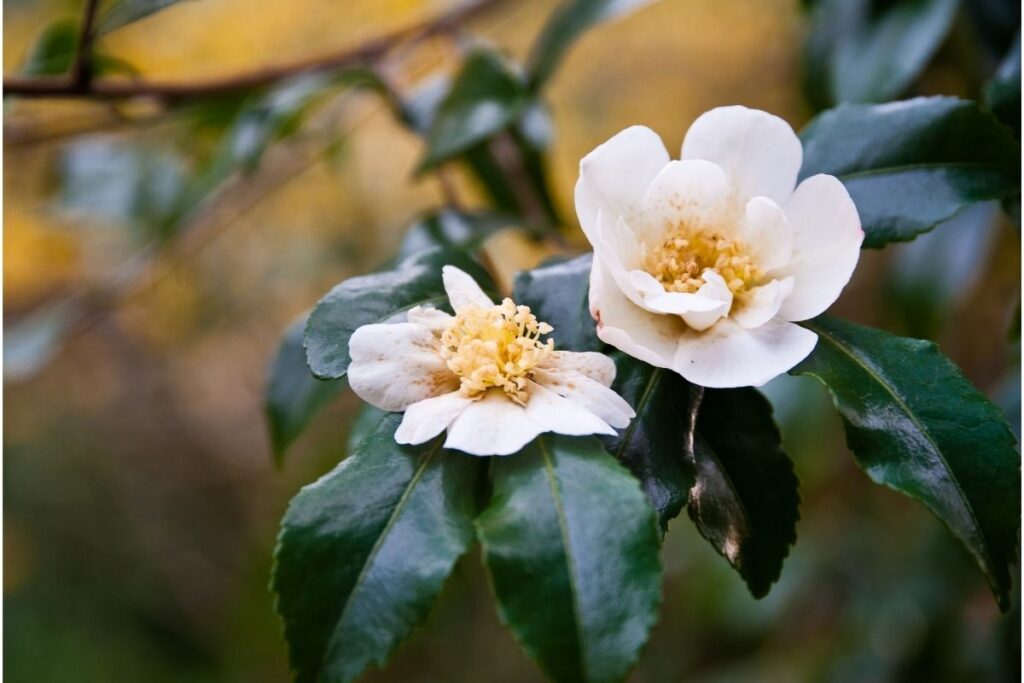
The Silky-camellia, even though classed as a small tree, is also thought of as a shrub that can grow as tall as 7 meters.
It grows mostly on the coastal plain from Southeastern Virginia down through North Carolina, South Carolina, and Georgia. The leaves of this plant are simple and oval, growing up to lengths of 10 cm.
However, the main feature of this tree is the large, showy white flowers that bloom during the summer months, which make this tree a delightful addition to any garden space.
RELATED: A Silver Lining: 19 Different Types Of Silver Trees
13. Silverbell
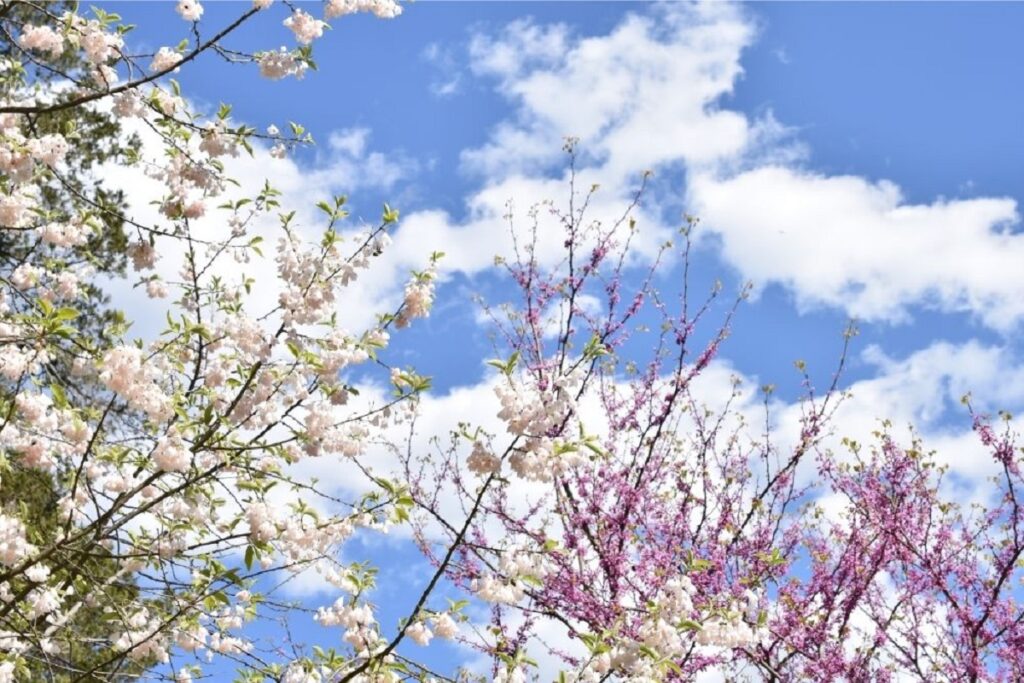
The Silverbell tree grows frequently along the streams in the Southeastern United States and is also native to Southeastern Asia.
It’s a fast-growing, medium-sized tree that can reach heights of up to 30 feet (ca. 9 m).
Its bell-shaped white flowers bloom from April through to May followed by 4-winged pale green fruits.
The oval leaves of this tree also change with the season after starting a glorious green during the spring/summer months and turning yellow in autumn.
14. Sorrel Tree

The Sorrel Tree is native to South-eastern North America and is considered a large shrub with incredibly colorful leaves.
The finely toothed, glossy green leaves turn a brilliant red in the autumn months, and the tree becomes decorated with small white flowers from late summer.
These incredible colors can be prolonged if the tree is planted in an area that is sheltered from strong gales.
Mature trees tend to display urn-shaped, fragrant flowers through the summer months which stand out against the dark leaves.
The Sorrel Tree is slow-growing and can stay shrub-like for lengthy periods.
Final Thoughts
Trees show their personalities throughout the different seasons with their changing colors, their blooming flowers, or their increase in height and spread.
All of these factors make each variety of trees unique and help bring something completely different to your space.
With so many trees beginning with the letter S, you truly are spoiled for choice when it comes to deciding which trees are your favorite.
These trees help create a truly wonderful, colorful, and special space for you and others to enjoy.
Editor’s Recommendations
11 Lovely Lilac Trees (With Pictures)







